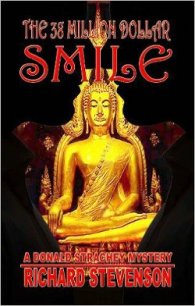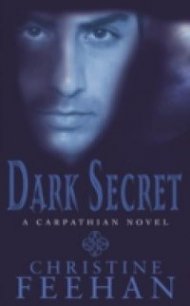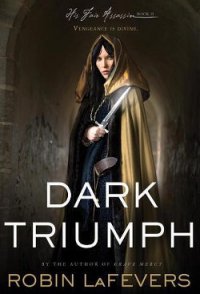Congo - Crichton Michael (книги регистрация онлайн бесплатно .TXT) 📗
It was the start of an eerie, silent battle.
Emerald laser beams flashed through the air; the tripod-mounted machine guns made a soft thew-thew-thew as the bullets spit outward, the aiming mechanisms whining as the barrels spun and fired, spun and fired again. Every tenth bullet was a white phosphorous tracer; the air was crisscrossed green and white over Elliot’s head.
The gorillas attacked from all directions; six of them simultaneously hit the fence and were repelled in a crackling burst of sparks. Still more charged, throwing themselves on the flimsy perimeter mesh, yet the sizzle of sparks and the shriek of the colobus monkeys was the loudest sound they heard. And then he saw gorillas in the trees overhanging the campsite. Munro and Kahega began firing upward, silent laser beams streaking into the foliage. He heard the sighing sound again. Elliot turned and saw more gorillas tearing at the fence, which had gone dead-there were no more sparks.
And he realized that this swift, sophisticated equipment was not holding the gorillas back-they needed the noise. Munro had the same thought, because he shouted in Swahili for the men to hold their fire, and called to Elliot, “Pull the silencers! The silencers!”
Elliot grabbed the black barrel on the first tripod mechanism and plucked it away, swearing-it was very hot. Immediately as he stepped away from the tripod, a stuttering sound filled the air, and two gorillas fell heavily from the trees, one still alive. The gorilla charged him as he pulled away the silencer from the second tripod. The stubby barrel swung around and blasted the gorilla at very close range; warm liquid spattered Elliot’s face. He pulled the silencer from the third tripod and threw himself to the ground.
Deafening machine-gun fire and clouds of acrid cordite had an immediate effect on the gorillas; they backed off in disorder. There was a period of silence, although the sentries fired laser shots that set the tripod machines scanning rapidly across the jungle landscape, whirring back and forth, searching for a target.
Then the machines stopped hunting, and paused. The jungle around them was still.
The gorillas were gone.
DAY 11: ZINJ
1. Gorilla Elliotensis
THE GORILLA CORPSES LAY STRETCHED ON THE ground, the bodies already stiffening in the morning warmth. Elliot spent two hours examining the animals, both adult males in the prime of life.
The most striking feature was the uniform gray color. The two known races of gorilla, the mountain gorilla in Virunga, and the lowland gorilla near the coast, both had black hair. Infants were often brown with a white tuft of hair at the rump, but their hair darkened within the first five years. By the age of twelve, adult males had developed the silver patch along their back and rump; the sign of sexual maturity.
With age, gorillas turned gray in much the same way as people. Male gorillas first developed a spot of gray above each ear, and as the years passed more body hair turned gray. Old animals in their late twenties and thirties sometimes turned entirely gray except for their arms, which remained black.
But from their teeth Elliot estimated that these males were no more than ten years old. All their pigmentation seemed lighter, eye and skin color as well as hair. Gorilla skin was black, and eyes were dark brown. But here the pigmentation was distinctly gray, and the eyes were light yellow brown.
As much as anything it was the eyes that set him thinking. Next Elliot measured the bodies. The crown-heel length was 139.2 and 141.7 centimeters. Male mountain gorillas had been recorded from 147 to 205 centimeters, with an average height of 175 centimeters-five feet eight inches. But these animals stood about four feet six inches tall. They were distinctly small for gorillas. He weighed them: 255 pounds and 347 pounds. Most mountain gorillas weighed between 280 and 450 pounds.
Elliot recorded thirty additional skeletal measurements for later analysis by the computer back in San Francisco. Because now he was convinced that he was onto something. With a knife, he dissected the head of the first animal, cutting away the gray skin to reveal the underlying muscle and bone. His interest was the sagittal crest, the bony ridge running along the center of the skull from the forehead to the back of the neck. The sagittal crest was a distinctive feature of gorilla skull architecture not found in other apes or man; it was what gave gorillas a pointy-headed look.
Elliot determined that the sagittal crest was poorly developed in these males. In general, the cranial musculature resembled a chimpanzee’s far more than a gorilla’s. Elliot made additional measurements of the molar cusps, the jaw, the simian shelf, and the brain case.
By midday, his conclusion was clear: this was at least a new race of gorilla, equal to the mountain and lowland gorilla-and it was possibly a new species of animal entirely.
“Something happens to the man who discovers a new species of animal,” wrote Lady Elizabeth Forstmann in 1879. “At once he forgets his family and friends, and all those who were near and dear to him; he forgets colleagues who supported his professional efforts; most cruelly he forgets parents and children; in short, he abandons all who knew him prior to his insensate lust for fame at the hands of the demon called Science.”
Lady Forstmann understood, for her husband had just left her after discovering the Norwegian blue-crested grouse in 1878. “In vain,” she observed, “does one ask what it matters that another bird or animal is added to the rich panoply of God’s creations, which already number-by Linnaean reckoning-in the millions. There is no response to such a question, for the discoverer has joined the ranks of the immortals, at least as he imagines it, and he lies beyond the
power of mere people to dissuade him from his course.”
Certainly Peter Elliot would have denied that his own behavior resembled that of the dissolute Scottish nobleman. Nevertheless he found he was bored by the prospect of further exploration of Zinj; he had no interest in diamonds, or Amy’s dreams; he wished only to return home with a skeleton of the new ape, which would astonish colleagues around the world. He suddenly remembered he did not own a tuxedo, and he found himself preoccupied with matters of nomenclature; he imagined in the future three species of African apes:
Pan troglodytes, the chimpanzee.
Gorilla gorilla, the gorilla.
Gorilla elliotensis, a new species of gray gorilla.
Even if the species category and name were ultimately rejected, he would have accomplished far more than most scientists studying primates could ever hope to achieve.
Elliot was dazzled by his own prospects.
In retrospect, no one was thinking clearly that morning. When Elliot said he wanted to transmit the recorded breathing sounds to Houston, Ross replied it was a trivial detail that could wait. Elliot did not press her, they both later regretted their decision.
And when they heard booming explosions like distant artillery fire that morning, they paid no attention. Ross assumed it was General Muguru’s men fighting the Kigani. Munro told her that the fighting was at least fifty miles away, too far for the sound to carry, but offered no alternative explanation for the noise.
And because Ross skipped the morning transmission to Houston, she was not informed of new geological changes that might have given new significance to the explosive detonations.
They were seduced by the technology employed the night before, secure in their sense of indomitable power. Only Munro remained immune. He had checked their ammunition supplies with discouraging results. “That laser system is splendid but it uses up bullets like there’s no tomorrow,” Munro said. “Last night consumed half of our total ammunition.’’


![[Magazine 1968-012] - The Million Monsters Affair - Davis Robert Hart (серия книг .txt) 📗](/uploads/posts/books/56864/56864.jpg)

